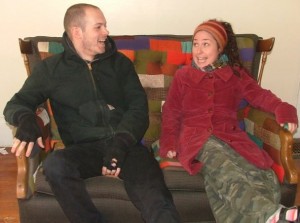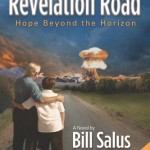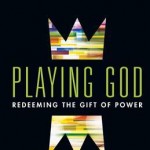
I recently met Tim Colegrove (his wife is an old friend from college), and was intrigued by his story and invited him to share part of it here… ~Chris
Guest Blogger: Timothy Colegrove Tim and Alice Colegrove live and work in Boston, MA where they serve with the Conservative Mennonite Conference (CMC) as evangelists and prospective church-planters. Their vision is to establish a multi-ethnic evangelical Anabaptist church in the city of Boston committed to discipling new believers, breaking down socio-economic barriers, and gathering an eclectic community around Jesus’ table. Prior to working with the CMC, Tim and Alice served for many years as advocates, street pastors, and family to homeless youth in Harvard Square.
While this blog post is my first official introduction to the slow church movement, the small Mennonite conference in which I serve as a minister is not unfamiliar with slowing things down (http://cmcrosedale.org). Originating in the Amish Mennonite movement of the late 19th century, the slow and discerning Amish way of doing life together can still be felt in the culture of many of our churches. And though it’s been 59 years since we ceased using the name “Amish” to describe ourselves, a culture valuing congregational simplicity, community, ministerial bivocationalism, and careful decision-making continues to define us alongside the more universal Mennonite values of nonviolence, believer’s baptism, and discipleship.
Naumberg Mennonite Church is a good example of how our conference’s churches have put “slow church” principles put into practice. Though the Castorland, NY church claims more than five hundred members and can hardly be called “small,” it functions quite differently from other churches of a similar size. It has no website, and the current pastor, Titus Mast, serves bivocationally, managing his local dairy farm while attending to the spiritual needs of the church community. Perhaps more incredibly, the church has no public address. The address you might find online would lead you to the Mast’s dairy farm, which has been provided as a 911 address for the church in case of emergency. In practical terms, this means that you have to know someone or be a part of the Castorland community in order to visit the church. Having no website and no public address has prevented Naumberg from falling for the technological superficiality that so often pervades modern relationships; the tendency to believe that we know a person once we become connected to them digitally. Without an address or website, Naumberg has been forced to be personal and invitational in its relationship to the wider Castorland community. Put simply, it has been the faithful and intentional relational presence that Naumberg has embodied in the Castorland community that has contributed to its success. As a “slow church,” Naumberg is a great example of a church that has grown through intimacy, relationality, and community rather than through flashy advertising, a celebrity pastor, or prefabricated “church growth” methodologies.
Don’t read me wrong; the slowed-down rural culture of our conference’s churches is not without its darker side. Being the “quiet in the land” has often come at the cost of being culturally homogenous and scholastically stunted. Those of us who grew up in the conference would be quick (and right!) to remind me not to paint an overly idealized picture; we have some bad habits to break and plenty of growing up to do. Nevertheless, for myself, as a city dwelling millennial steeped in the rhetoric of pre-packaged culture war America, the practical “salt of the earth” Christianity that I’ve encountered among the conference’s congregations has been deeply refreshing. I’ve been blessed with a healthy dose of “slow church” by a conference whose origins stretch back to the Amish movement of the 18th century, and in exchange have been able to contribute the more globalized urban perspective that the conference has at times lacked.
Though the “Slow Church” blog has dealt thoroughly with the implications of a “Slow Church” philosophy as it involves established congregations, I believe there is room for reflection on how it might apply to the work of making new disciples and planting churches in our communities. What might set apart the evangelistic efforts of a small, “slow,” Mennonite church conference like my own from mega-church evangelicalism? How did Naumberg Mennonite Church and other “slow churches” like it find their start? How could the “slow church” philosophy inform our way of sharing our faith with others, forming new church communities, and growing both qualitatively and quantitatively? These are some of the questions that I feel are worth exploring and that I hope to offer some responses to in blog posts to come.












